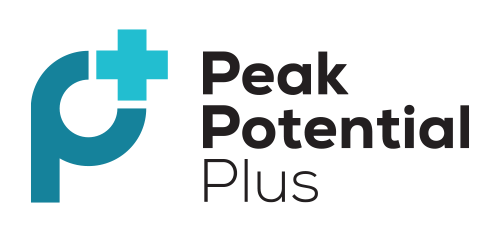Introduction
Cholangitis, a condition characterized by inflammation of the bile ducts, necessitates prompt and effective treatment to prevent complications and improve patient outcomes. Understanding the various treatment options available is crucial in providing comprehensive care for individuals affected by this condition.
Medication Treatment for Cholangitis
Antibiotics
Antibiotics play a central role in the management of cholangitis by targeting the underlying bacterial infection. Broad-spectrum antibiotics, such as ceftriaxone or piperacillin-tazobactam, are often prescribed empirically until the specific causative organism is identified through culture and sensitivity testing.
Ursodeoxycholic Acid (UDCA)
Ursodeoxycholic acid (UDCA) is a bile acid derivative that has been shown to improve bile flow and reduce inflammation in the bile ducts. It is commonly used in the treatment of primary sclerosing cholangitis (PSC) to alleviate symptoms and slow disease progression.
Antifungal Medications
In cases where cholangitis is caused by fungal infection, antifungal medications such as fluconazole or amphotericin B may be prescribed. These medications target the fungal organisms responsible for the infection and help resolve symptoms.
Procedures for Treating Cholangitis
Endoscopic Retrograde Cholangiopancreatography (ERCP)
Endoscopic retrograde cholangiopancreatography (ERCP) is a minimally invasive procedure used to diagnose and treat bile duct problems. During ERCP, a flexible endoscope is inserted through the mouth and guided to the bile ducts, where contrast dye is injected to visualize any blockages or abnormalities. Therapeutic interventions, such as balloon dilation or stent placement, can be performed during the same procedure to alleviate obstruction and improve bile flow.
Percutaneous Transhepatic Cholangiography (PTC)
Percutaneous transhepatic cholangiography (PTC) involves the insertion of a needle through the skin and into the liver to access the bile ducts. Contrast dye is then injected through the needle to obtain images of the bile ducts using X-ray imaging. PTC can be used to diagnose and treat bile duct obstruction by draining bile or placing stents to bypass the blockage.
Biliary Stenting
Biliary stenting is a procedure in which a small tube, or stent, is inserted into the bile duct to keep it open and allow bile to flow freely. Stents can be placed endoscopically or percutaneously and are often used to relieve obstruction caused by tumors, strictures, or gallstones.
Surgical Interventions for Cholangitis
Cholecystectomy
Cholecystectomy, or surgical removal of the gallbladder, may be recommended in cases where cholangitis is caused by gallstones. Removing the gallbladder eliminates the source of recurrent stone formation and reduces the risk of future episodes of cholangitis.
Liver Transplantation
Liver transplantation may be considered in severe cases of cholangitis where the liver is significantly damaged and non-responsive to medical or surgical interventions. Transplantation offers the possibility of a cure and improved long-term survival for individuals with end-stage liver disease due to cholangitis.
Hepatic Resection
Hepatic resection involves surgical removal of a portion of the liver affected by cholangitis or associated complications, such as biliary strictures or tumors. This procedure may be performed to alleviate symptoms, improve bile flow, and prevent disease progression in select patients.
Emerging Therapies and Research
Immunomodulatory Therapies
Immunomodulatory therapies, including corticosteroids, immunosuppressants, and biologic agents, are being investigated for their potential role in the treatment of autoimmune cholangitis and other immune-mediated forms of cholangitis. These therapies target the underlying immune dysfunction and aim to reduce inflammation and bile duct injury.
Nanotechnology in Cholangitis Treatment
Nanotechnology-based approaches, such as nanoparticle drug delivery systems and targeted therapies, hold promise for improving the efficacy and safety of cholangitis treatment. By enhancing drug delivery and minimizing off-target effects, nanotechnology has the potential to revolutionize the management of cholangitis and reduce treatment-related complications.
Targeted Therapies
Targeted therapies, including monoclonal antibodies and small molecule inhibitors, are being developed to specifically target key molecular pathways involved in the pathogenesis of cholangitis. These therapies offer the potential for personalized treatment approaches and improved outcomes for patients with cholangitis.
Complications and Risks of Treatment Options
Infection
Infection is a potential complication of cholangitis treatment, particularly in cases where invasive procedures or surgical interventions are performed. Antibiotic prophylaxis and strict adherence to aseptic techniques are essential to minimize the risk of post-procedural infection and ensure optimal patient safety.
Bleeding
Bleeding can occur as a complication of invasive procedures, such as ERCP or PTC, due to injury to blood vessels within the liver or bile ducts. Close monitoring of patients and prompt intervention in cases of bleeding are necessary to prevent hemorrhage and its associated complications.
Damage to Bile Ducts
Damage to the bile ducts is a rare but serious complication of cholangitis treatment, particularly in cases where surgical interventions involve manipulation or resection of the bile ducts. Careful surgical technique and intraoperative imaging guidance are critical to minimize the risk of bile duct injury and preserve biliary anatomy and function.
Factors Influencing Treatment Choice
Severity of Cholangitis
The severity of cholangitis, as determined by clinical presentation, imaging findings, and laboratory parameters, influences the choice of treatment modalities. Mild cases of cholangitis may respond well to conservative measures, such as antibiotics and supportive care, while severe or recurrent cases may require more aggressive interventions, including endoscopic or surgical procedures.
Underlying Causes
The underlying causes of cholangitis, such as gallstones, strictures, tumors, or autoimmune conditions, play a significant role in guiding treatment decisions. Targeting the specific etiology of cholangitis is essential for effective management and prevention of recurrence.
Patient’s Overall Health
The overall health and comorbidities of the patient must be taken into account when selecting treatment options for cholangitis. Factors such as age, underlying medical conditions, and functional status may influence the risk-benefit profile of different treatment modalities and guide individualized care plans.
Combination Therapy Approaches
Antibiotic and Biliary Drainage
Combination therapy approaches, such as antibiotic administration combined with biliary drainage procedures, are often employed in the management of severe or complicated cases of cholangitis. By addressing both the infectious and obstructive components of cholangitis, combination therapy aims to achieve optimal outcomes and reduce the risk of treatment failure.
Medication and Surgical Intervention
Combining medication therapy with surgical intervention may be necessary in cases where cholangitis is refractory to conservative measures or associated with complications requiring definitive treatment. Multimodal therapy approaches offer the potential for synergistic effects and improved overall response rates.
Integrated Care Plans
Integrated care plans, incorporating medication management, procedural interventions, and supportive care measures, are essential for optimizing outcomes and promoting long-term success in the treatment of cholangitis. Multidisciplinary collaboration among healthcare providers, including gastroenterologists, hepatologists, surgeons, and radiologists, is key to developing comprehensive care plans tailored to the individual needs of patients.
Recovery and Follow-Up Care
Monitoring for Recurrence
Regular monitoring for recurrence of cholangitis is essential following treatment to detect early signs of infection or disease progression. Close follow-up with healthcare providers, including clinical evaluation, imaging studies, and laboratory testing, allows for timely intervention and preventive measures.
Rehabilitation and Dietary Recommendations
Rehabilitation and dietary recommendations play a crucial role in supporting recovery and optimizing long-term outcomes for patients with cholangitis. Physical therapy, nutritional counseling, and dietary modifications, such as a low-fat, high-fiber diet, help restore strength, promote healing, and prevent complications.
Long-term Management Strategies
Long-term management strategies focus on minimizing the risk of recurrence and preserving liver function in patients with cholangitis. Lifestyle modifications, including weight management, smoking cessation, and alcohol moderation, along with regular medical follow-up and adherence to prescribed medications, are essential for maintaining optimal health and quality of life.
Conclusion
In conclusion, cholangitis treatment options encompass a diverse range of medications, procedures, and surgical interventions aimed at addressing the underlying cause of inflammation and promoting bile duct health. From antibiotic therapy and endoscopic procedures to liver transplantation and emerging therapies, the management of cholangitis requires a multifaceted approach tailored to the individual needs of each patient. By understanding the available treatment options, weighing the risks and benefits, and collaborating with healthcare providers to develop personalized care plans, individuals affected by cholangitis can achieve optimal outcomes and enjoy a better quality of life.



















